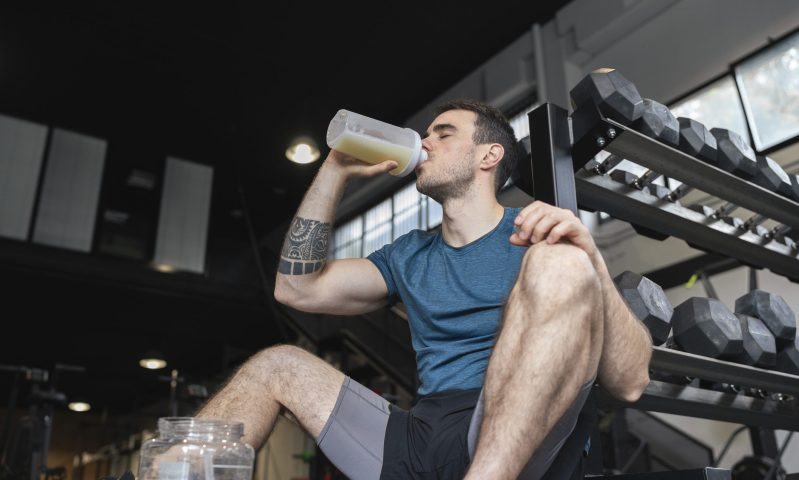
This spring is the perfect time to start weightlifting to improve your strength and overall fitness. As you navigate your regimen, you’ll want to pay close attention to the foods you eat and when you eat them. Believe it or not, this can greatly affect the success of your training.
When thinking about how best to reach your goals, it’ll help to have a well-designed weight-training food plan. It wouldn’t benefit you to eat too soon or too late, so you’ll want to have optimal timing, as well as enjoy the right foods.
Keep reading to discover which protein, fat, and carbohydrate sources are best, as well as how to time your meals to yield advantageous results.
How diet plays a role in lifting success

It’s important to emphasize that each component of wellness should flow together to optimize your health outcomes, and there is a connection between diet and exercise outcomes.
The nutrients provided by the foods you eat have a great influence on the effectiveness of your training. This is partly due to the type of training you do, as you’d have to consider when to have a greater intake of carbs or protein, and you’d also have to make adjustments for the varying caloric needs at each level of workout intensity.
Look out for the dietary components that may impair your progress. Notorious culprits like sports drinks and fruit juices contain high sugar content. Consider excess ingredients when grabbing your choice of yogurt, as Greek yogurt may be a more beneficial option compared to the full-fat type with added sugars and flavorings. Try grilling or baking your choice of meat instead of frying it, and use vinaigrettes as salad dressings, as these contain less saturated fats.
Overall, you want to aim for natural food sources that are high in protein to help the muscles rebuild after putting in the work during a solid lifting session.
What should you eat before lifting weights?

If you eat a meal before weightlifting, it would be best to include foods that supply fuel and strength without making you feel full or sluggish.
Some possible snacks to try might include tuna or turkey, which are light protein sources that deliver amino acids to the muscles. Complex carbs like oats and apples contain some fiber, which nourishes the gut without overloading it while also providing energy. Fat sources, like nuts and yogurt, work to maintain blood sugar levels and to keep you feeling full during your workout.
It’s also important to note that you should limit excessive amounts of fiber and fat before working out to avoid bloating. Therefore, you should prioritize light, mostly carb-based snacks that won’t delay digestion.
Several sources of pre-workout-friendly nutrients exist, such as B-vitamin complex, creatine, amino acids, and caffeine. These compounds are typically found in fitness-focused supplements because they improve physical performance.
Creatine supplementation is good for upgrading muscle mass and strength without minimizing fatigue; whole-food sources include fish, eggs, and meat. Caffeine-containing supplements are great for their fat-burning effects and for providing energy. Consider taking a B-vitamin supplement or regularly enjoying sources like seafood, poultry, and leafy greens for even more energy. Lentils, nuts, and seeds supply branched-chain amino acids, which reduce muscle damage while supporting muscle protein synthesis.
What should you eat post-workout?

Eating after weightlifting can be just as important because it helps your body with recover and rejuvenate. Staying hydrated is key, but make sure you do this without relying heavily on sports drinks, as they are often loaded with additional sugars. The post-workout period is focused on obtaining the nutrients needed to repair muscle tissues, so you will want to focus on healthy protein sources paired with nutrient-dense carb sources like fruits and veggies.
For example, you could try vegetable omelets or grilled chicken breast with a side of mixed vegetables and rice. If you need something that takes minimal to no prep time, consider pairing a protein bar or protein shake with fruit like bananas, apples, or berries.
Ideally, you will also want your post-workout meals to include a healthy fat source, as this has a positive impact on muscle recovery after a workout by increasing the skeletal muscle blood flow and enhancing neuromuscular function. As a result, try mixing foods like edamame, peanut butter, avocado, or whole eggs into your meal.
Does timing actually matter?

There can be significance in the timing of workouts and meals because of the effect it has on your body and the ability to exercise optimally, as well as the ability to recover well.
There may be some lifters who can perform their regimen adequately regardless of whether or not they’ve eaten. However, some of us feel fatigued and weak if we try to train without the fuel of a pre-workout meal. On the flip side, some of us feel bloated or too full to move if we eat before a workout. Listen to your body and its response to the type of weightlifting you do; if you can’t make it through the workout without getting weak, you may need to eat a light carb-based snack before getting your regimen started.
Mealtime can significantly impact the way you feel during the physical workout and after the workout, but there’s a deeper concept that concerns the body’s internal processes. Nutrient timing and the anabolic window are often discussed in nutrition and sports, and it refers to the best time to eat after a workout to upgrade your muscle growth and repair. This peak time was previously described as just one hour of golden opportunity, but the results of some studies have recently suggested that having an adequate pre-workout meal just before exercising can extend the post-workout anabolic window to five or six hours after exercising rather than just one critical hour after your workout.
Timing of nutrients can also align with the length of time spent working out. For a session that lasts at least an hour, having carbs before a workout can sustain the glycogen levels in the muscles. For your meals after training, a mixture of both carbs and protein may be advantageous, as this can reduce muscle loss.
Additionally, a shorthand rule for eating before workouts generally advises that smaller portions be consumed within a shorter time before training; with only an hour or less before start time, opt for a yogurt cup or fruit, but you could have a smoothie or a sandwich and salad if you eat two to three hours before the training.



